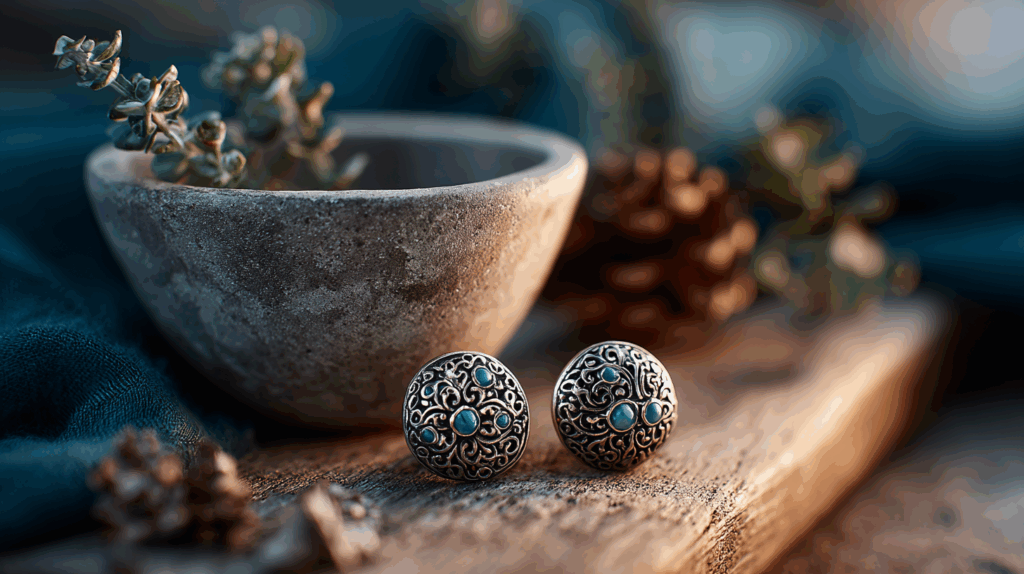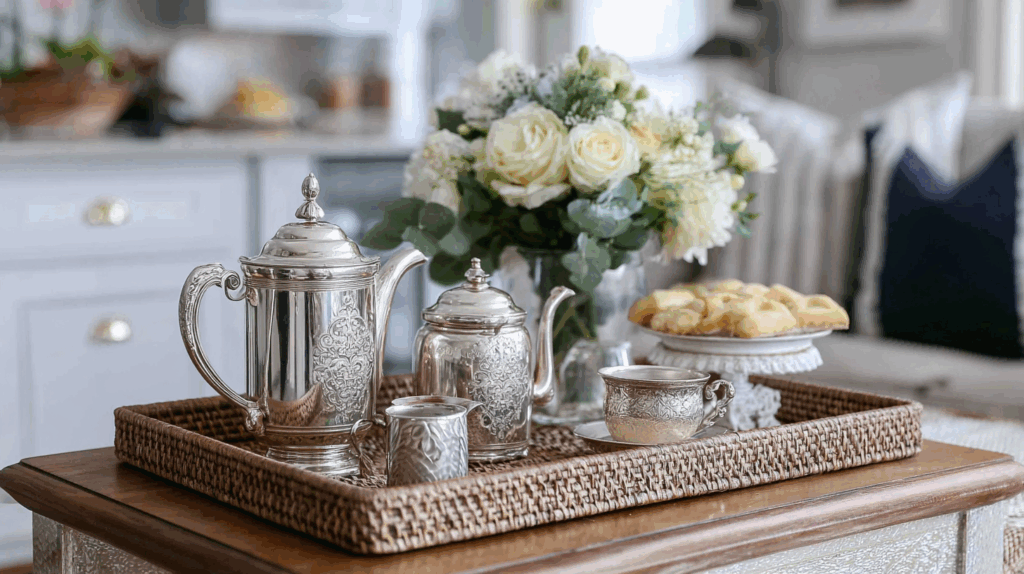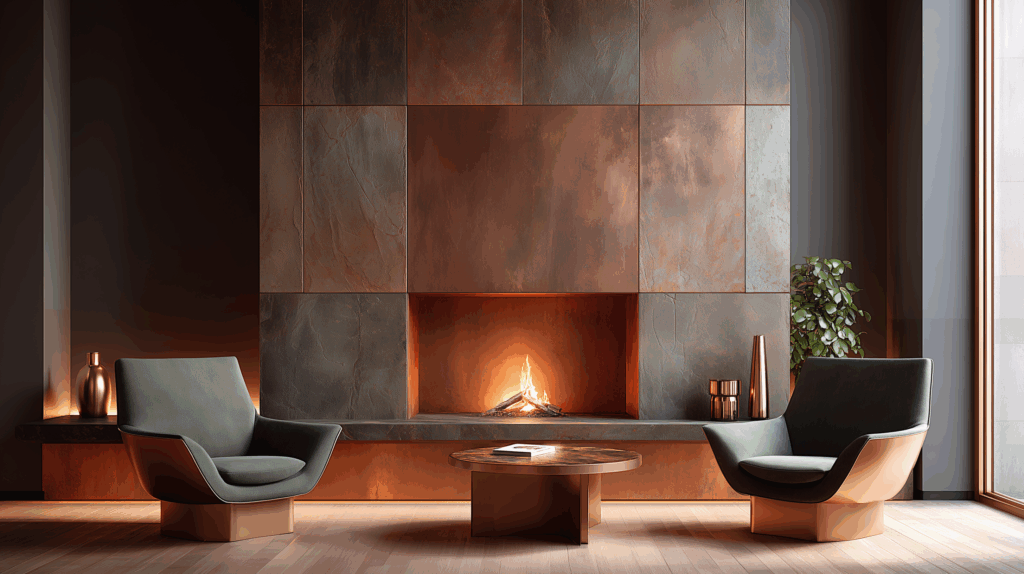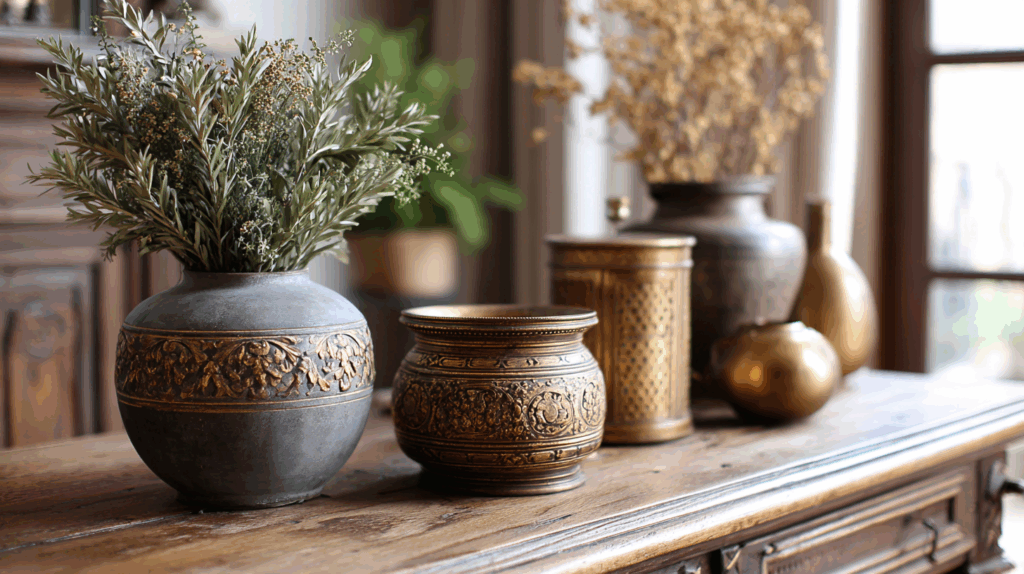From 2020 to 2025, there has been a notable shift in how homeowners, designers, and collectors incorporate metals in their home decor. They are now exploring new ways to mix materials, honor heritage pieces, and blend practicality with aesthetics.
From the raw and rugged charm of nickel and chrome found in industrial-style homes to the warm glow of copper and gold in mid-century moderns, and the sustainable use of recycled metals in brutalism, this half-decade has proven that metal is as important to interior design as ever.
Whether you’re a long-time enthusiast of metal in decor or just beginning to incorporate it into your space, these insights will demonstrate how it has transformed the design landscape and continues to influence how we style our homes.
This is not a definitive guide, but let’s unpack some of these trends by decade to offer insight into the enduring appeal and adaptability of metals.

2020–2021: Mixing Metals And Materials
2020 marked a shift in interior design. As people spent more time at home, there was a collective shift toward creating environments that felt both personal and expressive.
One of the most defining trends to emerge was the art of mixing metals and materials in Maximalism and Modern Farmhouse. Many homeowners and designers began experimenting with blending brushed brass, rose gold, silver, and copper with organic materials like wood and fabric, sometimes all in the same room.
Maximalist style, characterized by bold colors, layered patterns, and diverse textures, reflects a deeper desire for homes to feel abundant and focused on individuality, rather than perfectly curated — a style that embraces whimsy and personal expression.
It’s a style that invites creativity. Think marble countertops paired with rose gold faucets, wood tables set with multi-colored velvet cushions alongside large, brass-framed mirrors.
Modern Farmhouse is, as expected, a take on the classic farmhouse style, characterized by its cozy, rustic, and country charm. The modern version of this 2000s design swaps out the barnwood and copper for brushed nickel and brass, complemented by refined wood. The update incorporates sleek furniture and minimalist metal fixtures with shiplap walls and rustic wood beams.
Other interior design styles, like Grandmillennial, also had a moment in the spotlight. The 2021 style is a take on the preppy aesthetic with a similar classic yet playful vibe, incorporating rattan and bamboo, and combining them with gold and bronze accents to create a timeless look.
The design incorporates both vintage and modern elements to create a modern yet traditional style. This style featured people displaying heirloom metal pieces, such as figurines, keepsake boxes, and candlesticks, against modern, floral wallpaper and mid-century modern lighting.
The rustic look was also popular in 2021, with the Industrial style from the mid-2000s making a comeback along with Cottagecore.
Homeowners and designers alike began to gravitate toward the raw, utilitarian aesthetic of industrial-style decor, which featured an abundance of exposed metals, including chrome, brushed nickel, and brass.
The style resonated due to the honesty and practicality of unpolished finishes and the sturdy construction of heavy metal bases, often paired with shelving units and coffee tables, which were often complemented by wood or glass to balance the ruggedness of the metal with softer textures.
Similarly, Cottagecore spoke to a desire for homes to feel collected over time, full of antique-inspired furnishings, like those found in Grandmillennial, but more grounded in earthy tones and crafted elements.
The look is also sometimes referred to as the Studio Ghibli style, due to the beautiful, cozy homes featured in Hayao Miyazaki’s films. Warm copper cookware hanging above a stone kitchen island, with a shade of green on the walls, offers a refuge from the outside world that people needed amidst uncertain times.
The styles and mixing of metals in 2020 and 2021 signaled the return of coziness in interior design. Creating homes that felt personal, inviting, and creative.

2022–2023: Mixing Styles and The Return of Silver
As design sensibilities continued to evolve, 2022 and 2023 brought an unexpected, yet welcome, return to silver finishes — patinated, matte, and brushed — that felt timeless yet lived-in.
Accents were found on everything from small trims on tabletops to metal chair legs and even details on headboards. It was also used in metal wall art, which became another trend in this era. This metal reemerged as a neutral base that could effortlessly bridge styles, ranging from minimalist and maximalist to antique and modern, as well as traditional and industrial.
Two of the interior design looks that became more popular starting in 2022 were Japandi and Wabi-sabi. Very earthy, organic, and natural, this style falls under the minimalist umbrella.
Japandi is a nature-focused Japanese design style characterized by a calming atmosphere. The minimalist design is reminiscent of Scandinavian style, characterized by functionality, simplicity, and a connection to nature at its center. RentCafe found a 108% increase in search volume within the year.
The style features a mix of linen, bamboo, and stone, complemented by light accents of silver and gold in hardware, bowls, and vases. Earth tones, clean lines, and uncluttered spaces are key in this style. While metal adds to the depth and richness of these spaces, restraint is necessary to both feel sophisticated and zen.
Wabi Sabi interior design is like Japandi in its attachment to natural materials, but it embraces the beauty of imperfections and how items become worn through use. It values the asymmetry and the natural irregularities of the natural world and lets it inspire the design of the space and what fills it.
The style primarily features copper and bronze, materials renowned for their ability to develop a beautiful patina over time, which adds an organic feel to the space.
By 2023, the design landscape shifted to favor the still earthy Modern Spanish and the playful, relaxed Coastal Cowgirl aesthetic.
Modern Spanish or Spanish Revival design features earth tones and rich textures, often highlighting restored metalwork as statement pieces. While wrought iron and brass details are usual in Spanish style, silver reentered to update the design elements.
A vintage tea set on a bar cart, a silver picture frame gallery wall, or a brushed silver lantern brings a fresh, updated look to classic motifs.
Coastal Cowgirl, on the other hand, combines rustic Western elements with breezy, beach-inspired textures. A play on the very popular Coastal Grandmother look — a Nancy Meyers fever-dream, beach house aesthetic, Coastal Cowgirl mixes seashell motifs and framed beach prints with the rustic farmhouse elements like wood furniture, leather upholstery, and animal print rugs.
Soft white linens and wicker furniture are layered with Western decor items, such as cowboy boots, Stetson hats, and horseshoes, and blended with polished nickel and gold-finished cabinet pulls, kitchen and bathroom faucets, and fun tableware.
The boundaries between rustic and refined blurred slightly in this era, creating more design possibilities. People felt free to pair a sleek metal finish with a farmhouse console or blend modern lighting with organic accents.

2024–2025: Upcycling, Metal Furniture, and the Revival of Art Deco
Sustainable design was a big trend in 2024. Using eco-friendly materials and sustainable furnishing practices became increasingly important in interior design. It was no longer a niche concern but a driving force behind design choices.
This shift led to a significant rise in the use of recycled and repurposed metals in furniture, lighting, and accessories.
From dining tables made with reclaimed steel to light fixtures crafted from upcycled copper piping or salvaged brass, these pieces have a unique look and tell stories of transformation and ingenuity.
In 2024 and 2025, what’s old has become new again with Brutalism and Art Deco taking center stage.
Brutalism, which had started making a comeback at the end of 2023, came into its own and emerged as a major design trend of 2024. The style had an average monthly search volume of 3,780 according to RentCafe.
The 1950s style is characterized by its utilitarian and industrial aesthetic. The simplicity of bare bronze, steel, and concrete. Many furniture items are large and geometric, made from raw materials.
Upcycling home items focuses on the style’s functionality and visual aesthetics, making these pieces both a conversation starter and a functional object.
Perhaps most notably, Art Deco stepped back into the spotlight in 2025 with its lacquer and furniture silhouettes. After a few years of minimalism and organics, people once again crave ornamentation-rich details, layered textures, and flair.
From scalloped brass cabinet handles to chrome bar carts and vintage silver trays, the hallmarks of 1920s and ’30s design are being reinterpreted for the modern home.
Art Deco brings a sense of elegance and nostalgia to decor by adding a touch of natural drama: polished finishes, mirrored surfaces, inlaid details, lacquer, and distinctive furniture silhouettes. Homeowners and designers are leaning into mixed metals again, but this time with a sense of play, pairing blackened steel with brushed gold.
Thrift shopping from flea markets to family basements plays a huge part in reviving this style by rediscovering forgotten pieces and breathing new life into them.
This era reflects a renewed interest in permanence, personality, and a little glamour.

Future Trends
While designers may not know what the next interior design trends will be, some have shared their predictions.
In 2026, some designers predict a revival of Tuscan metal pieces and the Tuscan interior style as a whole. It was made popular around 20 years ago, featuring distinctive aged construction materials such as terracotta, gold, and wrought-iron detailing. Although it has been dismissed for several years, a refresh may be on the way.
Unconventional design styles, such as Retro Futurism —a modern update of the ’60s and ’70s vibe —may become more popular. It is already being adopted as the go-to style for Gen Z, but the eccentric surrealism of bright colors, wavy shapes, and metallic accents, such as silver and brushed nickel, might win over every generation.
Contemporary Arts & Crafts may also find its way onto the 2026 trend list in this increasingly fast-paced, commercial world. People may be seeking out what feels handmade and pieces rooted in a story.
The design style celebrates craftsmanship, honest materials, and the beauty of nature, utilizing artisanal furniture, natural textures, and motifs inspired by nature. Copper, brass, and iron play a huge role in creating a warm, modern space that feels luxurious and functional.
It’s not just about eco-friendly materials, but emotional longevity — choosing pieces built to last, that can be repaired, restored, and passed on.
The future of interior design is about creating spaces that are personal, sustainable, and deeply connected to the art of craftsmanship.
We’re Here through all the Trends
Trends may shift, and tastes may evolve, but the one thing that remains constant is the power of beautiful metal pieces to anchor a space, tell a story, and stand the test of time.
Whether you’re reviving a vintage silver tea set or polishing a brass serving tray for your new home, we’re here to help every piece shine, not just for today, but for decades to come.
We can help you bring your design vision to life with clarity and care.